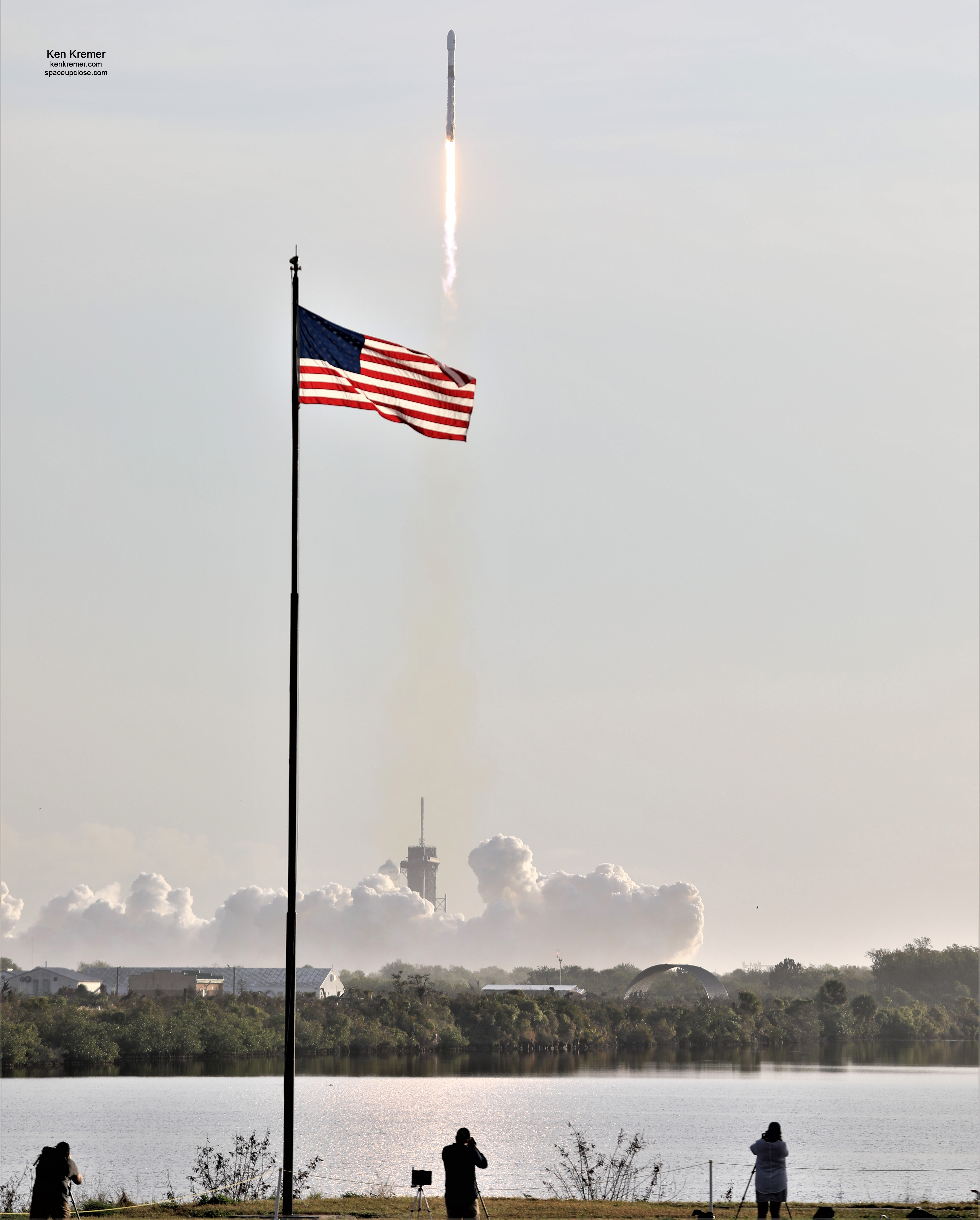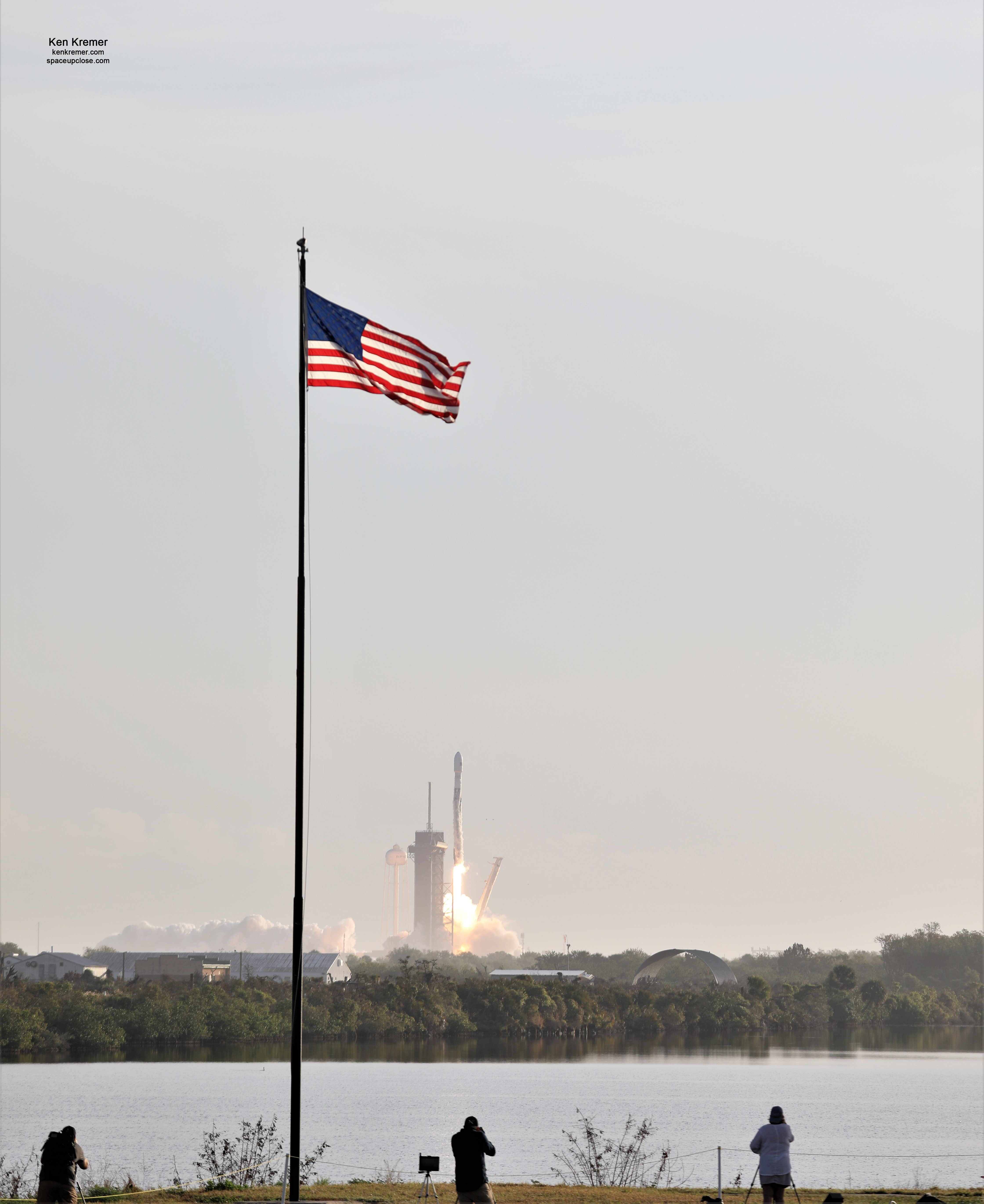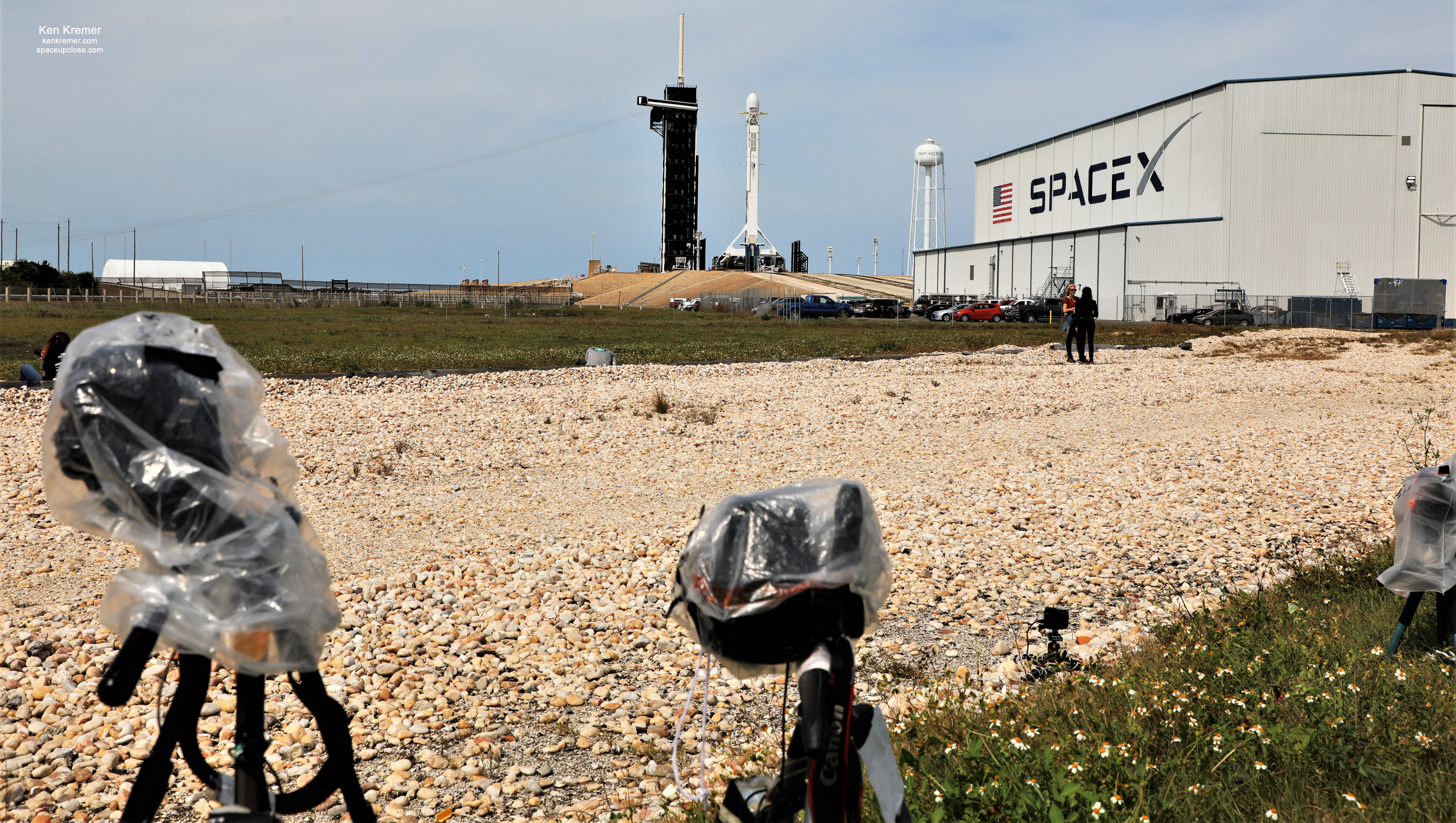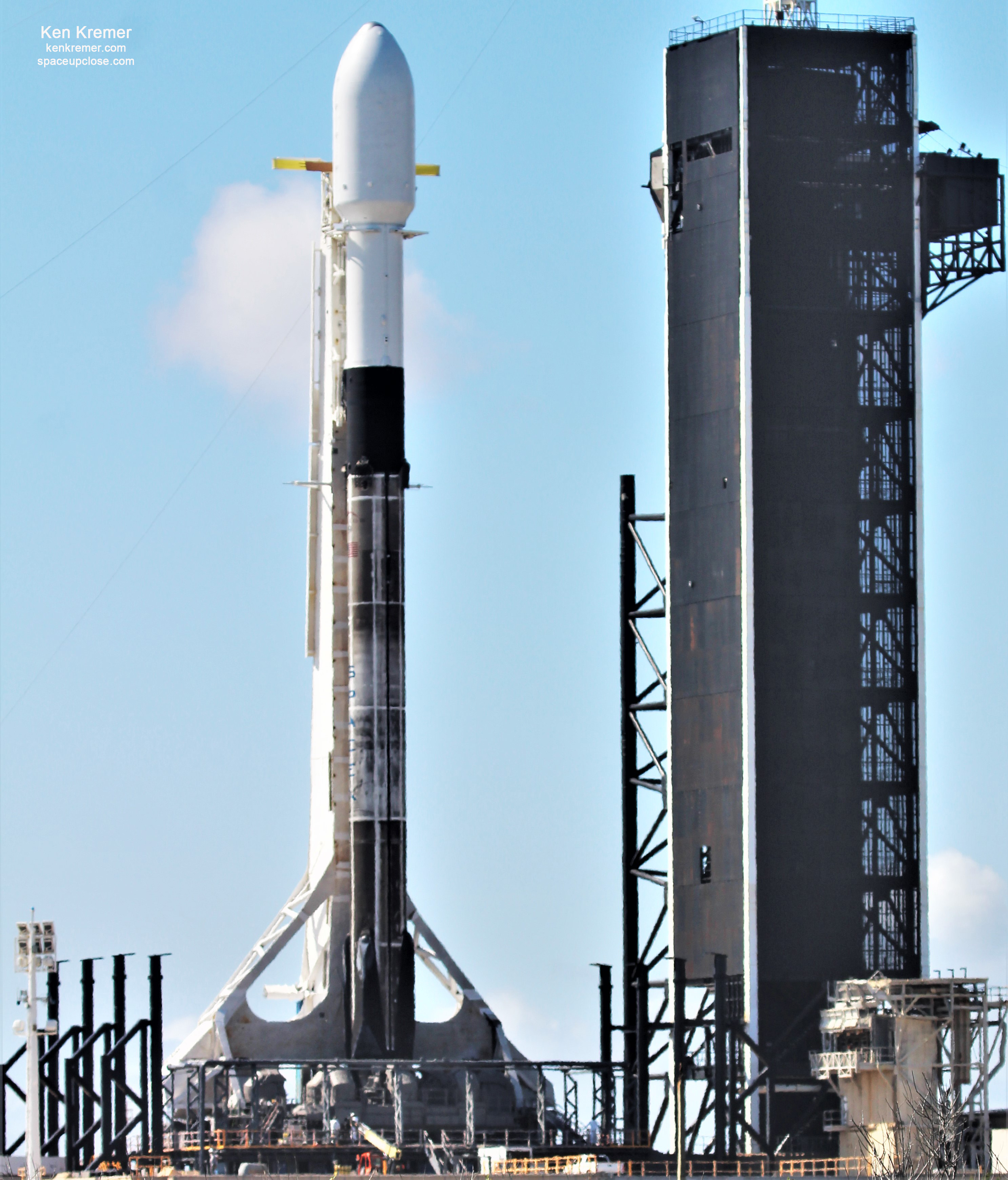
For SpaceUpClose.com & RocketSTEM
KENNEDY SPACE CENTER, FL – After engine troubles scrubbed the first try on Sunday, SpaceX engineers finally launched the 1st 5th launched Falcon 9 on the 2nd try and the next batch of 60 Starlink broadband satellites successfully achieved orbit from the Florida Space Coast – but only after one of the nine first stage Merlin engines shut down prematurely and the recycled booster failed to achieved a landing on the ocean going droneship.
Although it counts as the second failure in a row for a landing attempt at sea on the ‘Of Course I Still Love You’ droneship the SpaceX naval fleet was able to scoop both payload fairing halves out of the Atlantic Ocean after failing to catch them mid-air with the two fairing recovery ships.
Picture perfect liftoff of the 6th Starlink mission took place Wednesday morning at 8:16 a.m. EDT, 1216 GMT, March 18 from seaside Launch Complex-39A (LC-39A) on NASA’s Kennedy Space Center, FL.
Notably this recycled first stage counts as the record setting 1st 5th launch of a ‘flight-proven’ Falcon 9 – as well as being the first Starlink launch from pad 39A.
Enjoy our Up Close eyewitness photos of the Falcon 9 Starlink mission launch taken on site at the KSC Press Site as well as the earlier engine abort and up close pad photos and more.
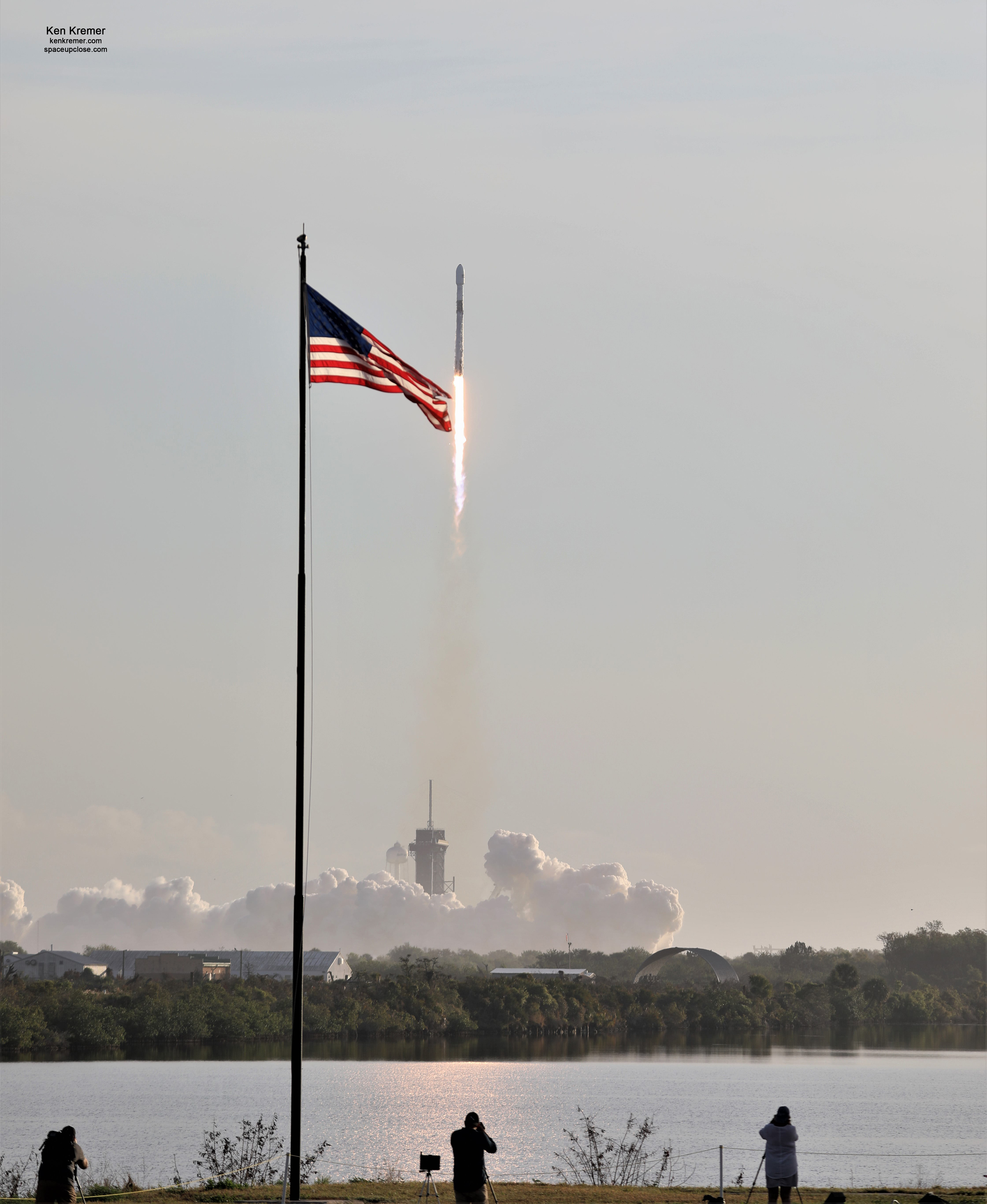
SpaceX did not give details about the engine failure or say if it was related to Sunday’s abort.

However SpaceX billionaire CEO and founder Elon Musk said it might have been and that the company would conduct a thorough investigation before the next Falcon 9 launch.
“There was also an early engine shutdown on ascent, but it didn’t affect orbit insertion. Shows value of having 9 engines! Thorough investigation needed before next mission,“ Musk tweeted.
Yeah. There was also an early engine shutdown on ascent, but it didn’t affect orbit insertion. Shows value of having 9 engines! Thorough investigation needed before next mission.
— Elon Musk (@elonmusk) March 18, 2020
“Shows value of having 9 engines!” Musk added on Twitter.
This upgraded Block 5 booster B 1048 has previously launched and landed four times successfully.
Furthermore Musk said that such highly recycled and “life leader rockets” will only be used for internal SpaceX missions such as Starlink.
“Last launch aborted due to slightly high power. Possibly, but not obviously, related to today. This vehicle has seen a lot of wear, so today isn’t a big surprise. Life leader rockets are used only for internal missions. Won’t risk non-SpaceX satellites,” Musk tweeted.
Last launch aborted due to slightly high power. Possibly, but not obviously, related to today. This vehicle has seen a lot of wear, so today isn’t a big surprise. Life leader rockets are used only for internal missions. Won’t risk non-SpaceX satellites.
— Elon Musk (@elonmusk) March 18, 2020
The Block 5 Falcon 9 has been designed for 10 launches. Thus far two have successfully launched 4 times including B1048.
The Falcon 9 first stage previously supported 4 missions including the Iridum-7 NEXT mission in July 2018 and the SAOCOM 1A mission in October 2018 from Vandenberg Air Force Base and then the Nusantara Satu mission in February 2019, and the second launch of Starlink in November 2019 from the Florida Space Coast – following successful booster recoveries each time.

The two stage Falcon 9 rocket stands 229 feet (70 meters) tall.
The payload comprised the sixth batch of 60 SpaceX built and owned Starlink broadband internet satellites launching to LEO with an overall mass of some 7.7 tons.

SpaceX retargeted the Falcon 9 Starlink launch to Wednesday morning, March 18, 2020 following Sunday morning’s automatically aborted liftoff of the ‘flight-proven’ rocket moments after the first stage engines dramatically ignited for the planned blastoff of the next Starlink mission from NASA’s Kennedy Space Center, FL under picture perfect skies at the Florida Space Coast.
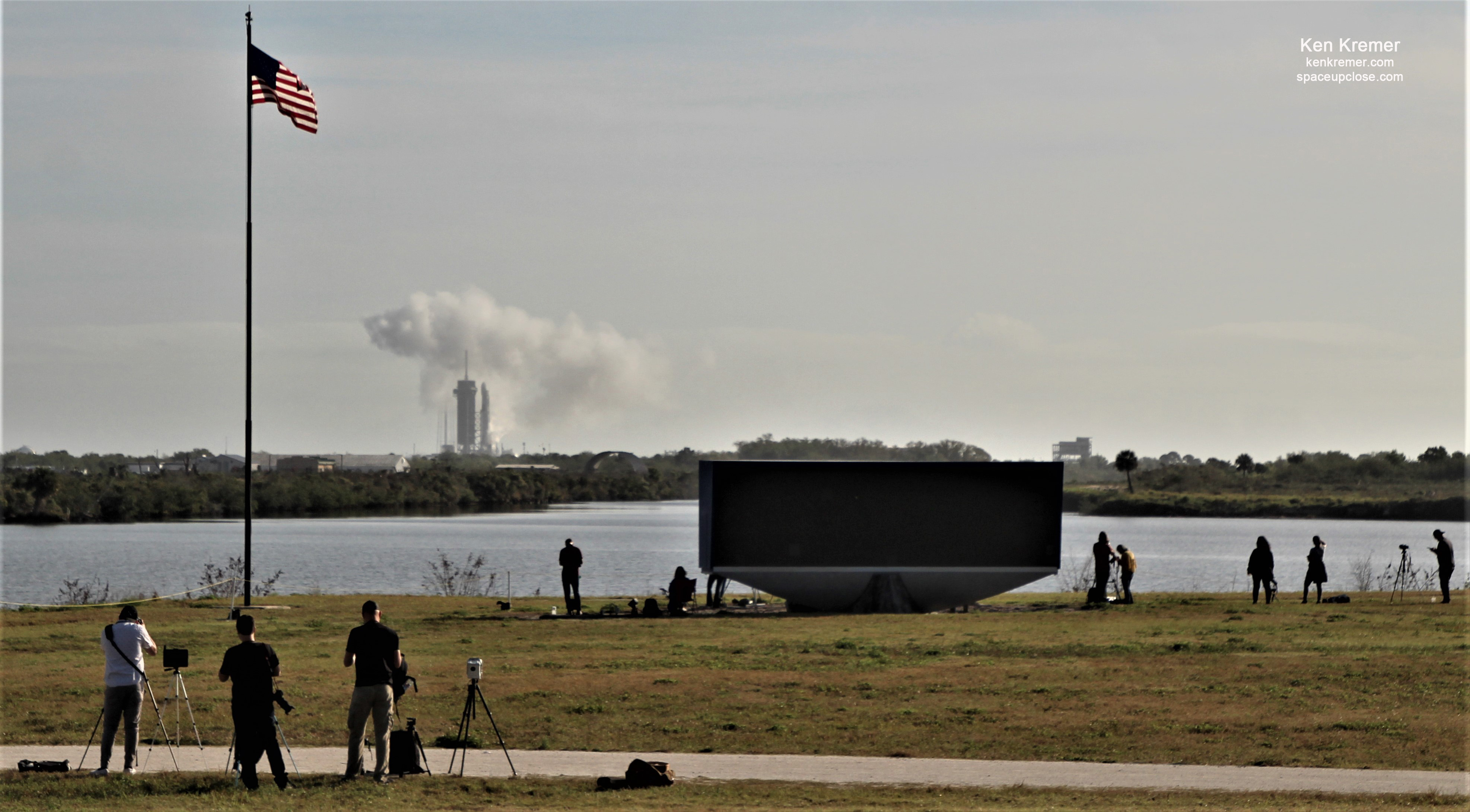
The launch was broadcast live via SpaceX webcast
The SpaceX team was poised for and completed the record setting liftoff of the 1st ever 5th launched Falcon 9 first stage– amidst the ever growing coronavirus pandemic crisis that has forced closures of public places, school and travel hubs all across the US and the world but not forced a US rocket cancellation
The weather outlook Wednesday was great with a 90% chance of acceptable conditions at launch time.
Read our earlier Starlink articles for further mission details.

SpaceX attempted to recover the first stage and both payload fairings.
Following stage separation, SpaceXunsuccessfully targeted the booster to land on the “Of Course I Still Love You” (OCISLY) droneship about 8 minutes after launch – which was stationed in the Atlantic Ocean. Perhaps due to the failure of one of the 9 first stage Merlin 1D engines
Falcon 9’s fairing previously supported the first launch of Starlink in May 2019.
Approximately 45 minutes after liftoff, SpaceX’s two fairing recovery vessels, “GO Ms. Tree” and “GO Ms. Chief,” attempted unsuccessfully to recover the two fairing halves mid-air with their giant catchers mitt nets.
However they were able to scoop them out of the ocean waters and they are now on the journey back to Port Canaveral for potential reuse.
“Today’s Falcon 9 launch was the second time SpaceX has re-flown a full payload fairing. After landing in the water, both fairing halves were quickly recovered,” SpaceX tweeted.
Today’s Falcon 9 launch was the second time SpaceX has re-flown a full payload fairing. After landing in the water, both fairing halves were quickly recovered. pic.twitter.com/JF9y7yrkxp
— SpaceX (@SpaceX) March 18, 2020
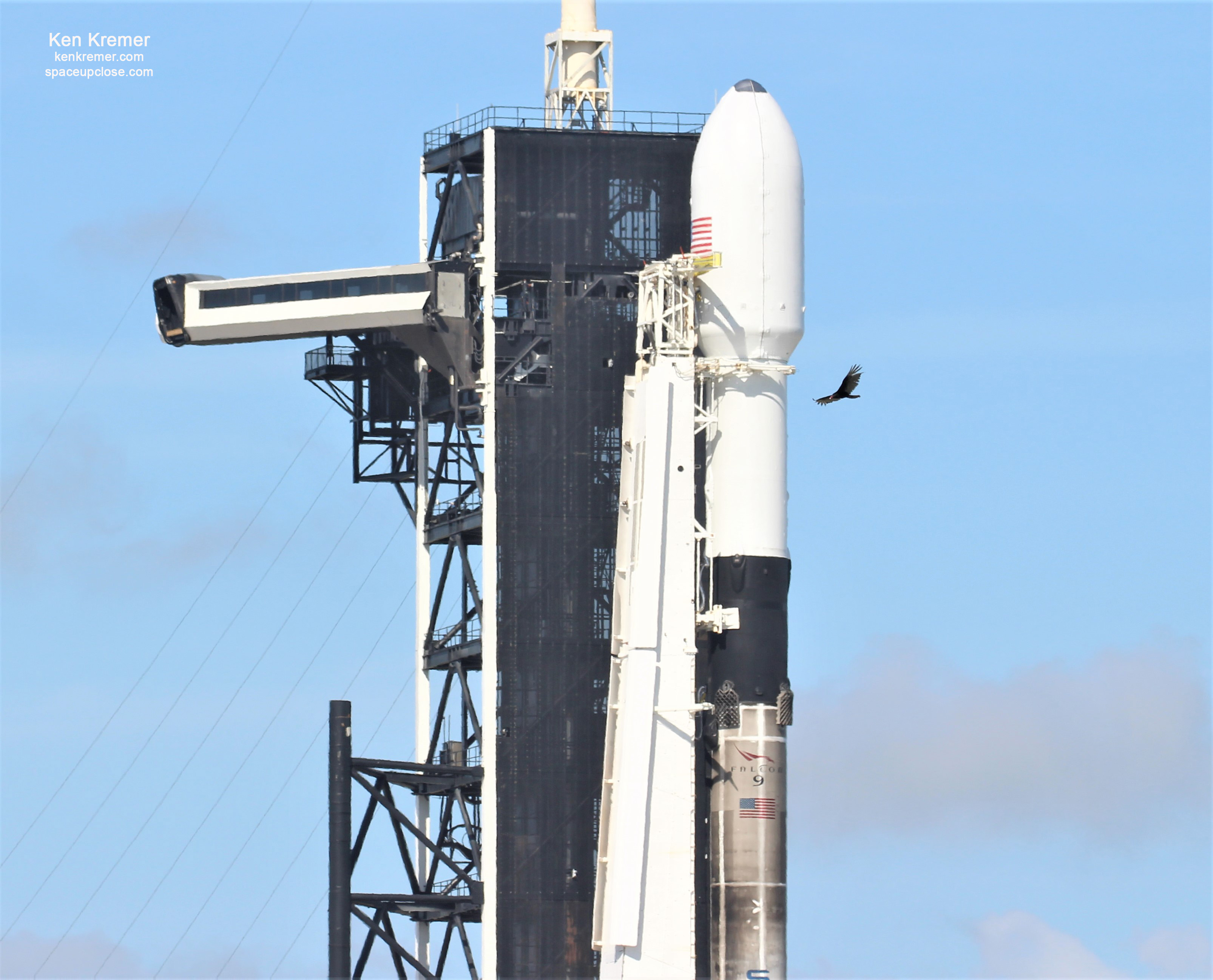
SpaceX CEO Elon Musk has made rocket recycling a top priority in order to slash launch costs.
Musk says that the fairings cost approximately $6 million or roughly 10% of the approximate cost of $60 million for a new Falcon 9 rocket.
The Starlink satellites were successfully deployed starting approximately 15 minutes after launch into an elliptical low Earth orbit starting about 200 km altitude and then raised to their operating orbit of about 550 km with on board krypton ion thrusters.
Successful deployment of 60 Starlink satellites confirmed pic.twitter.com/GZq8sUQ2TP
— SpaceX (@SpaceX) March 18, 2020
SpaceX is currently the owner of the largest fleet of Earth orbiting satellites – already numbering 300 Starlink satellites delivered to orbit earlier – and now 360 following today/s successful deployment of 60 more after all went well.
Watch my commentary about SpaceX Starlink launch and impact of Covid 19 pandemic on NASA and the Space Industry on WFTV ABC Ch 9 TV News Orlando.

My SpaceX Starlink launch pad and static fire photos were featured at WKMG CBS 6 TV News Orlando:

Watch Ken’s continuing reports about onsite for live reporting of upcoming and recent SpaceX and ULA launches including Starlink, Solar Orbiter, In-Flight Abort, Mars 2020 and more at the Kennedy Space Center and Cape Canaveral Air Force Station.
Stay tuned here for Ken’s continuing Earth and Planetary science and human spaceflight news: www.kenkremer.com –www.spaceupclose.com – twitter @ken_kremer – email: ken at kenkremer.com
Dr. Kremer is a research scientist and journalist based in the KSC area, active in outreach and interviewed regularly on TV and radio about space topics.
………….
Ken’s photos are for sale and he is available for lectures and outreach events
Ken has created hundreds of widely published Mars rover mosaics and lectures also about NASA’s Mars rovers
